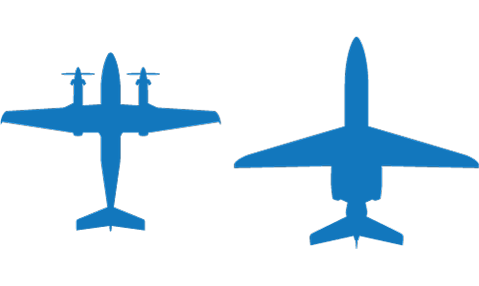Help available for operators meeting new guidelines
A long-planned regulatory change that will alter the operations of many business aircraft in Europe will go into effect August 25, 2016. The European Aviation Safety Agency (EASA) rule change will require aircraft comply with Part-NCC (Non Commercial Complex) regulations. Under those rules, corporate aircraft and those operated for individuals, including owner-flown aircraft, must adapt a safety framework similar to commercial operators with an air operator’s certificate (AOC).
A solution is available to all King Air®, Citation® and Hawker® customers who need assistance ensuring they meet all requirements by the August deadline. Textron Aviation has partnered with industry experts to develop a one-stop program.
The new rule applies to any non-commercial operator flying a “complex, motor-powered aircraft” registered within the EASA member states as well as any aircraft registered in a non-EASA state but where the operator is established or resides in an EASA state. In part, the rule refers to aircraft with take-off weight exceeding 5,700 kilos or equipped with turbojet or more than one turboprop engine.
According to Part-NCC rules, a complex, motor-powered aircraft has at least one of these:

A maximum take-off mass exceeding
5,700 kilograms
Certified for operation with a minimum crew
of at least two pilots
A maximum passenger seating configuration
of more than 19
Equipped with a turbojet engine or
more than one turboprop engine
Under Part-NCC rules, operators must use only suitably qualified and trained personnel. The person legally responsible for the aircraft’s compliance must also implement and maintain training and checking programs for crew members.
It also requires the aircraft operator to have a safety management system in place. That includes an operations manual, minimum equipment list (MEL), record-keeping and compliance with various requirements, including training mandates. Details regarding performance and operating limitations and equipment must also be included.
“We’ve designed our Part-NCC solution to be easy to implement,” said Duncan Van De Velde, European sales director for Textron Aviation.
To prevent downtime, Van De Velde suggests aircraft operators begin planning how they’ll meet Part-NCC regulations now.
Operators may receive more information about the program that helps operators efficiently meet Part-NCC regulations by contacting their regional sales directors or emailing part-ncc@txtav.com for more information.
Some Part-NCC requirements
 Establish a management system
Establish a management system Create an operations manual and tail-specific Minimum Equipment List (MEL)
Create an operations manual and tail-specific Minimum Equipment List (MEL) Nominate persons as applicable to the operation
Nominate persons as applicable to the operation Assign the aircraft to a Continuing Airworthiness Management Organization (CAMO)
Assign the aircraft to a Continuing Airworthiness Management Organization (CAMO) Establish an audit plan
Establish an audit plan
The above provides general information only. You should seek additional information about Part-NCC requirements to ensure compliance.
Videos and stories contained in this site may contain information that while accurate at the time of publication, has since been updated. Please connect with a representative for any questions.